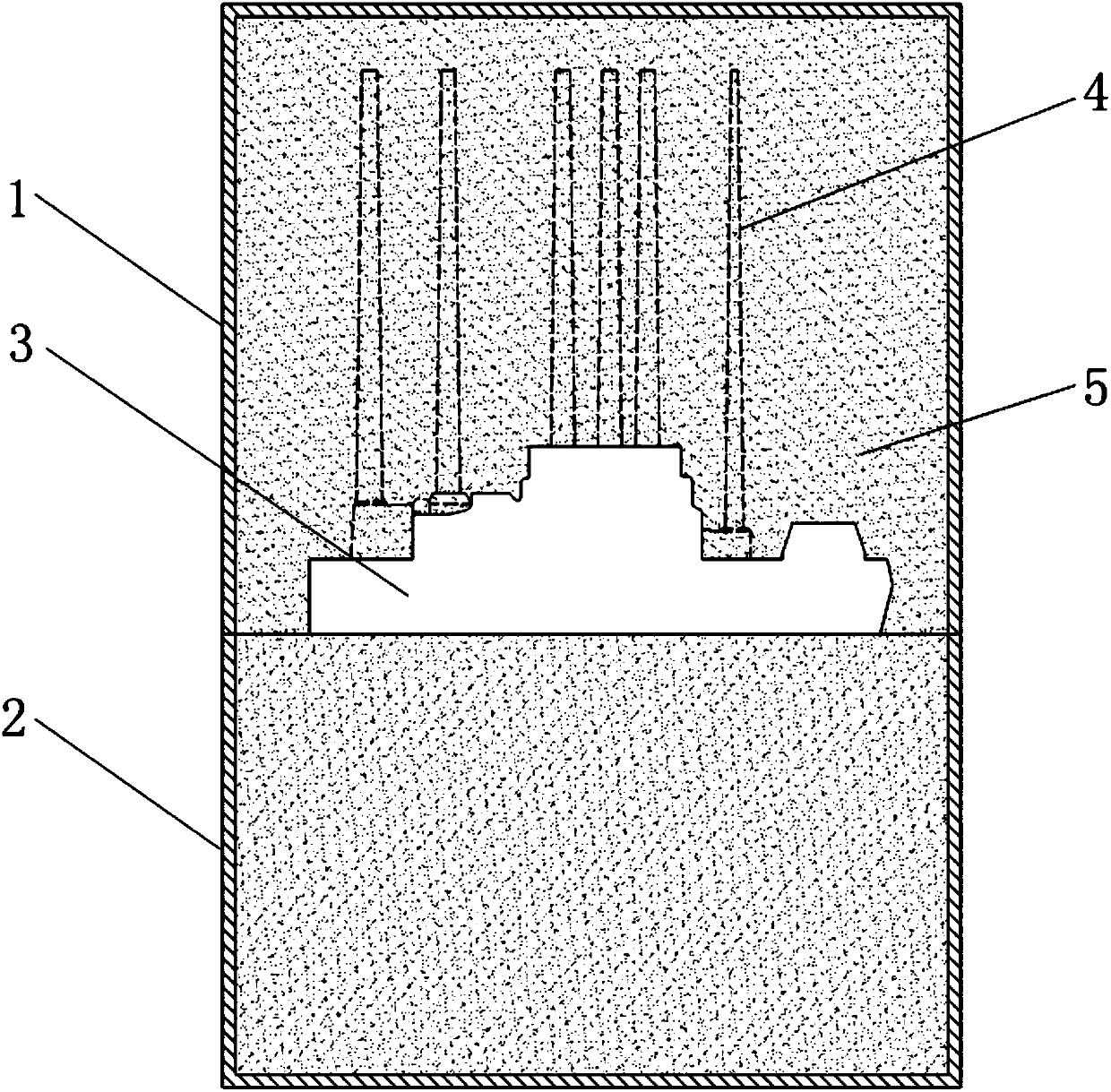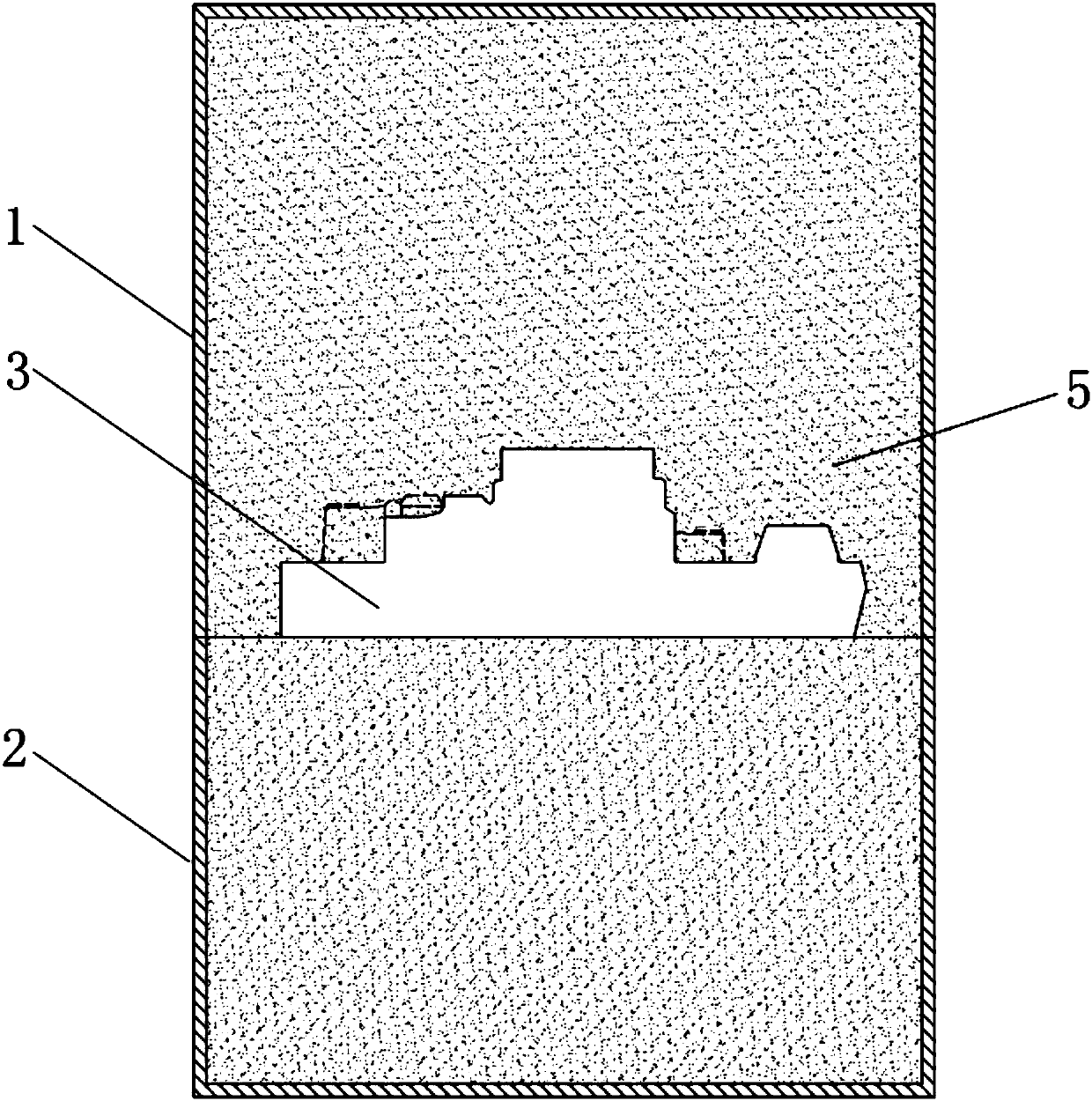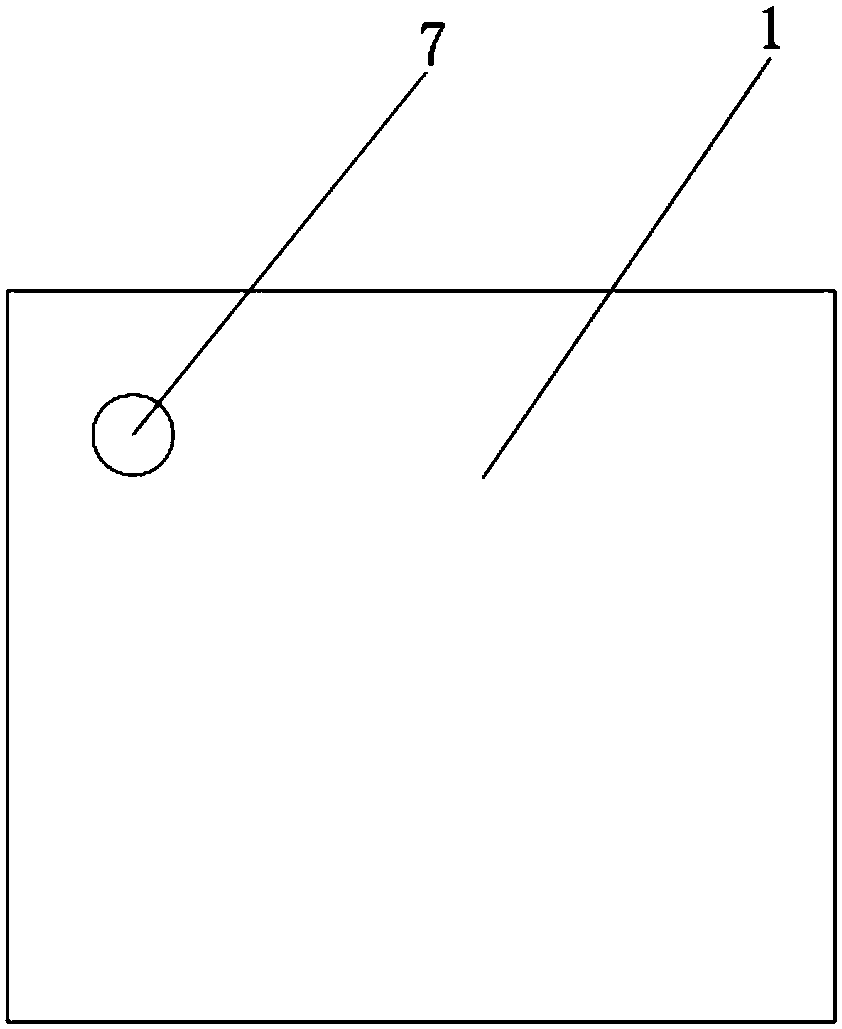Spraying-free and mould-cavity-venting-free tidal sand casting process and casting mould
A sand casting, spray-free technology, used in casting molding equipment, molds, mold components, etc., can solve the problems of molten iron filling turbulence, low local pressure in the mold, increase production costs, etc., and achieve stable product quality. The effect of reducing production cost and labor intensity
- Summary
- Abstract
- Description
- Claims
- Application Information
AI Technical Summary
Problems solved by technology
Method used
Image
Examples
Embodiment 1
[0036] Green sand casting process without spraying and cavity exhaust:
[0037] (1) Mold making: making molds without mold cavity exhaust pins;
[0038] (2) Configure tidal sand: Take new sand with a mesh number of 70 and mix it with used old sand evenly, add binder, additives and water to make tidal sand. Specifically, the molding sand is calculated by weight percentage: new sand 5%, old sand 90%, bentonite 0.3%, coal powder 1%, α starch 0.6%, water 3.1%, and the obtained molding sand has a moisture permeability of 60%.
[0039] (3) Mold making: molds and casting molding equipment are used to make damp sand into molds without cavity vent needles. The cavity hardness of the mold is greater than 85.
[0040] (4) Pouring in a closed box: Put the sand core of the casting into the mold, pour the molten iron in a closed box, and control the pouring temperature of the molten iron between 1400-1460°C.
[0041] (5) Shakeout.
[0042] (6) After the casting is naturally cooled to be...
Embodiment 2
[0044] Green sand casting process without spraying and cavity exhaust:
[0045] (1) Mold making: making molds without mold cavity exhaust pins;
[0046] (2) Configure tidal sand: Take new sand with a mesh number of 140 and mix it with used old sand evenly, add binder, additives and water to make tidal sand. Specifically, the molding sand is calculated by weight percentage: 6% of new sand, 90% of old sand, 0.3% of bentonite, 0.5% of coal powder, 0.5% of alpha starch, and 2.7% of water. The obtained molding sand has a moisture permeability of 70%.
[0047] (3) Mold production: use molds and casting molding equipment to make green sand into molds without cavity vent needles, and the cavity hardness of the molds is greater than 85.
[0048] (4) Pouring in a closed box: Put the sand core of the casting into the mold, pour the molten iron in a closed box, and control the pouring temperature of the molten iron between 1400-1460°C.
[0049] (5) Shakeout.
[0050](6) After the casti...
Embodiment 3
[0052] Green sand casting process without spraying and cavity exhaust:
[0053] (1) Mold making: making molds without mold cavity exhaust pins;
[0054] (2) Configure tidal sand: Take new sand with a mesh number of 100 and mix it with used old sand evenly, add binder, additives and water to make tidal sand. Specifically, the molding sand is calculated by weight percentage: new sand 8%, old sand 85%, bentonite 1.6%, coal powder 1.8%, alpha starch 0.5%, water 3.1%, and the obtained molding sand has a wet air permeability of 80%.
[0055] (3) Mold making: molds and casting molding equipment are used to make damp sand into molds without cavity vent needles. The cavity hardness of the mold is greater than 85.
[0056] (4) Pouring in a closed box: Put the sand core of the casting into the mold, pour the molten iron in a closed box, and control the pouring temperature of the molten iron between 1400-1460°C.
[0057] (5) Shakeout.
[0058] (6) After the casting is naturally cooled...
PUM
| Property | Measurement | Unit |
|---|---|---|
| hardness | aaaaa | aaaaa |
Abstract
Description
Claims
Application Information
 Login to View More
Login to View More - R&D
- Intellectual Property
- Life Sciences
- Materials
- Tech Scout
- Unparalleled Data Quality
- Higher Quality Content
- 60% Fewer Hallucinations
Browse by: Latest US Patents, China's latest patents, Technical Efficacy Thesaurus, Application Domain, Technology Topic, Popular Technical Reports.
© 2025 PatSnap. All rights reserved.Legal|Privacy policy|Modern Slavery Act Transparency Statement|Sitemap|About US| Contact US: help@patsnap.com



